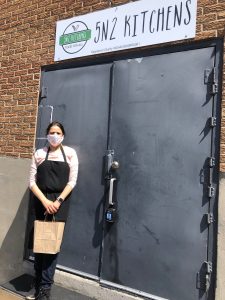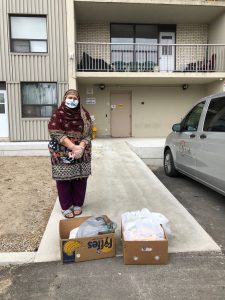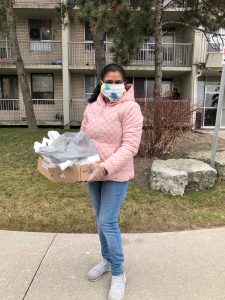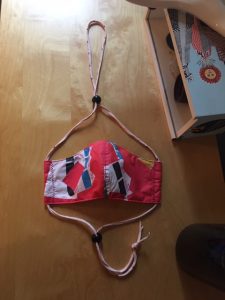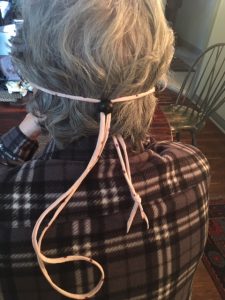During this period of COVID-19 pandemic, like many organizations and businesses, we have hit the pause button in offering repair cafes. However, our fixers continue to fix things at home and lend their skills and helping hands to our community when needed.
Amazing Donations from our own sewing fixers
In April, we received a request from one of our community partners in Scarborough for the donations of cloth face masks for 5n2Kitchens, and our sewing fixers showed an amazing response. A total of 250 homemade masks were quickly collected from our fixers. Most of them were sent to 5n2Kitchens for their food prep volunteers. Their volunteers are delivering free meals to the homes of those families in need during the COVID-19 pandemic. Some masks were passed onto PSWs in our network.
Many thanks to our wonderful volunteers! Below are the photos of the volunteers at 5n2Kitchens in Scarborough wearing the face masks our fixers made.
The need for non-medical masks and face coverings
After seven weeks of lockdown, the strict measures for COVID-19 pandemic has shown signs of positive effects. We are beginning to see the flattening of the “curve”, and fewer new cases have been reported in recent days in Toronto and the rest of the country. But we need to continue to be vigilant.
As advised by our public health officials, we should stay home if not feeling well. We also need to maintain a two metre distance from others and continue hand-hygiene measures to prevent community spread. Also, when physical distancing is not possible while we are out in public spaces (grocery shopping, taking public transit, and the like), one way to protect others is to wear homemade masks.
Tips to make effective cloth face masks
You can make your own face masks at home in different ways. Some homemade face masks are more effective than others for preventing respiratory viral transmission. It is also important to pick material that is breathable. According to an American Chemical Society paper and a Cambridge University Press paper, below are some tips for making cloth masks that provide better protection to the wearers.
- use cotton fabric, the higher weave density the better
- two layers are better than one
- can also use two layers of cotton/silk, cotton/chiffon, or cotton/flannel
- important to design it to fit to face with no gap/leak
Compared to medical masks which are generally disposed of after a single use, homemade cloth masks are washable and reusable. It is recommended to wash your homemade mask daily with hot water and laundry detergent. And before making your mask, remember to wash all the material and wash your hands.
Check out our fixer Jung-Hee’s mask making video!
Our sewing fixer Jung-Hee and her daughter have created a video on making a cloth face mask. In the video “Mask Making Challenge” below, Jung-Hee shows you step by step how to make a face mask.
Mask Making from Global Class on Vimeo.
Below are a few videos and patterns on face mask making. Feel free to try one out. The first one has inspired Jung-Hee to make hers.
- Video & Pattern #1 – Married to the Farm
- Video & Pattern #2 – Craft Passion
- Video & Pattern #3 – Free Sewing
Learn about different ways to wear a cloth mask – Tips from our fixer Gail
According to Gail, there are at least three different options to wear a cloth mask. That is, elastic going across the back of head, elastic going around ears, and one that uses a long thin strip of T-shirt fabric and some toggles. Here are the photos from Gail on making the ties with toggles:
If you would like to learn to sew or repair things, it is never too late to learn. And you may be able to help your family and community in the future. Check out our last post for a few online resources.
Stay healthy!

